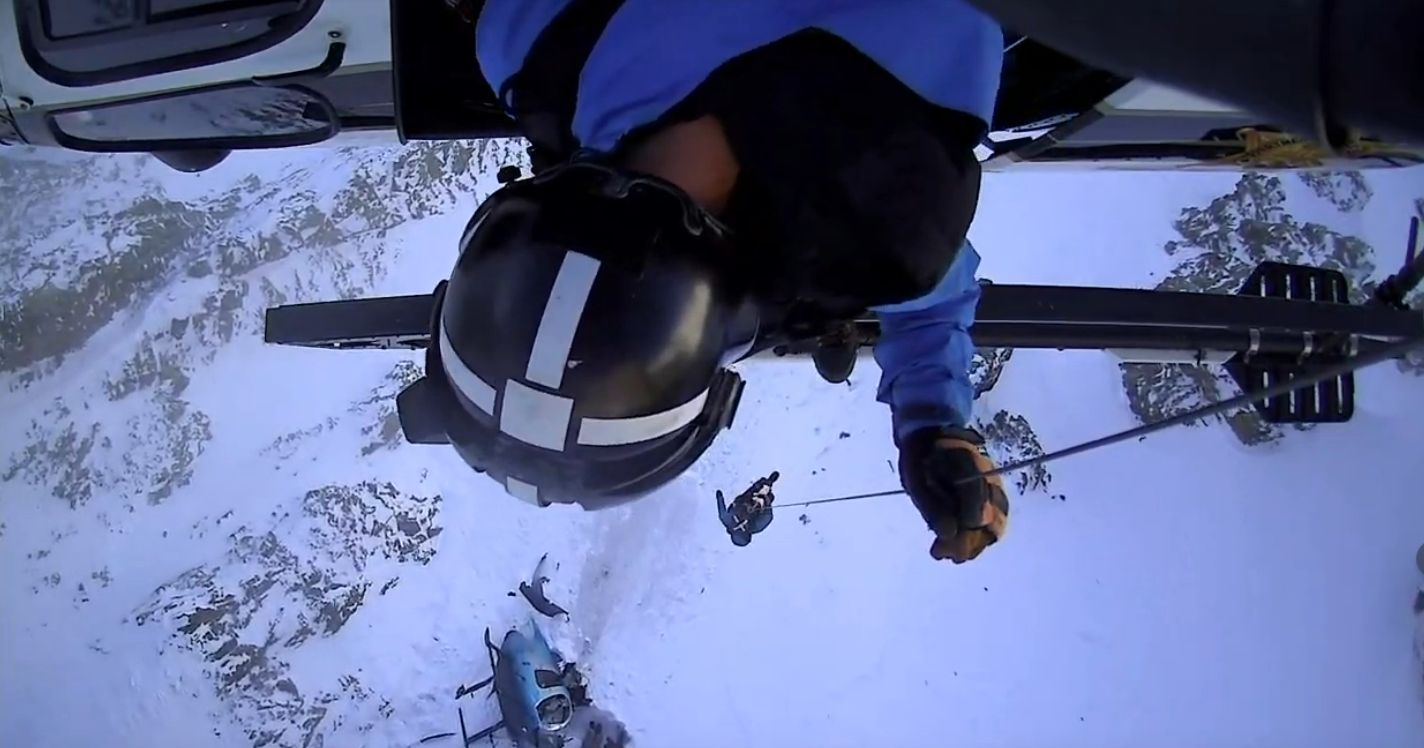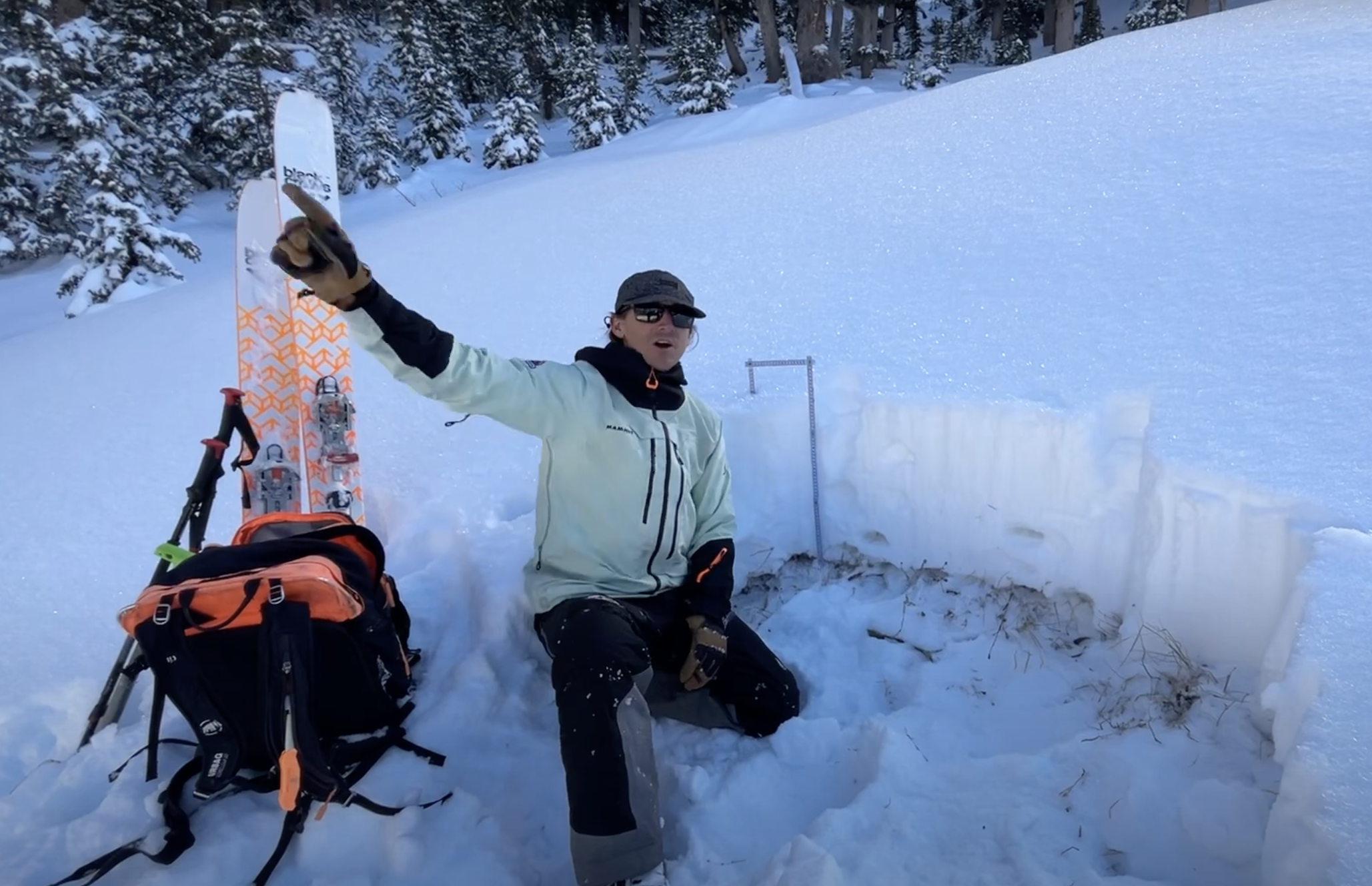Some information may be outdated.
On Dec. 8, a contract crew for the Division of Wildlife Resources was conducting a wildlife mission in the La Sal Mountains when their helicopter crashed into Mount Tukuhnikivatz. None of the three crew members on board were seriously injured.
“The cause of the accident is still under investigation, but the pilot believes it may have been caused by falling rocks, which appear to have hit the blades while the helicopter flew close to the cliff face,” said Faith Jolley, public information officer for the DWR. The Federal Aviation Administration and the National Transportation Safety Board are investigating the crash.
According to a Dec. 8 press release from the San Juan County Sheriff’s Office, dispatch was notified of a suspected helicopter crash in the mountains at around 11:15 that morning. Search and Rescue personnel were unable to reach the steep terrain where the crash occurred; Forest Service spokesperson Andrew Orlemann said the location is in the Cleaver Chutes area on the back side of the mountain.
Local officials called in the Utah Department of Public Safety for assistance, and that agency sent a helicopter which, at around 3 p.m., airlifted the crew to a staging zone where they were cleared by Grand County EMS personnel.
The contract helicopter itself did not fare so well. Jolley said it is “estimated to be a total loss.” District Ranger for the Moab/Monticello District of the Manti-La Sal National Forest Michael Engelhart said the agency has been advising the private company that was operating the helicopter, as well as another company contracted by their insurers, on removing the damaged aircraft. He anticipates it will be slung out by another helicopter some time next week.
Jolley said the DWR always contracts helicopter missions to a private company because the DWR does not own a helicopter. The company involved in the crash was Helicopter Wildlife Services, which Jolley said is “operated by highly trained and responsible professionals who understand the risks involved with their job.”
Crewmembers were capturing mountain goats to attach radio collars and conduct blood draws. According to a 2020 article from the DWR, the agency “captures around 1,000 big game animals each year to perform health assessments and to place GPS collars on the animals to learn more about their migration patterns,” as well as lifespans and favored habitats. Animals captured throughout the state include deer, elk, bison, bighorn sheep and pronghorn, in addition to mountain goats.
“These studies help biologists determine overall winter survival rates and where to implement habitat projects to improve winter and summer feeding ranges for big game,” according to the DWR.
The protocols usually take place in November and December, the article says, when animals have migrated to lower elevations and are thus easier to find; they also recover more quickly in cooler temperatures.
The DWR’s Mountain Goat Management Plan for the La Sal Mountains calls for
a helicopter survey every two to three years to assess the mountain goat population; it also says GPS collars may be used to measure survival, trend and movements. Mountain goats were introduced to the La Sal Mountains in 2013 and 2014, and their presence has been controversial, as they are not native to the range.
Engelhart acknowledged that the helicopter crashed in an environmentally sensitive area; he said that so far, there has been no indication of fluid leaks, and that monitoring and any necessary clean-up efforts will continue into the future.
Response to Thursday’s crash was a multi-agency effort. The San Juan County Sheriff’s Office offered this message of gratitude:
“We thank the Grand County Sheriff’s Office, Grand County Search and Rescue, Grand County EMS, US Forest Service, San Juan County Search and Rescue, and the Utah Department of Public Safety for all working together, not only during this incident, but at all times to protect and serve our great county, residents, and visitors.”
Appreciate the coverage? Help keep local news alive.
Chip in to support the Moab Sun News.





